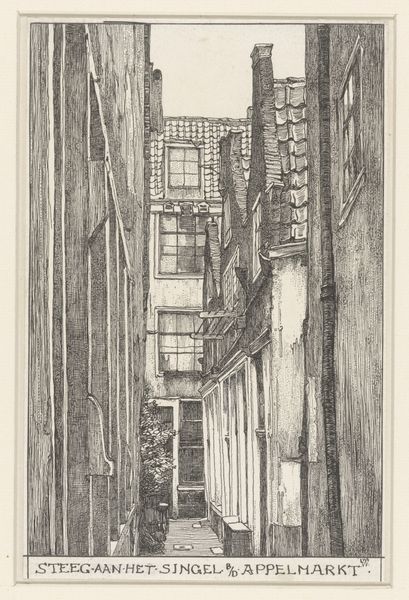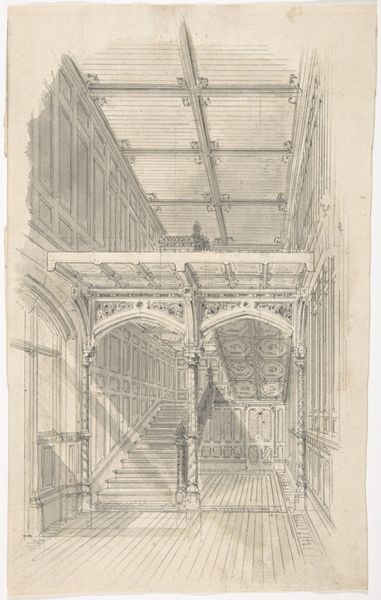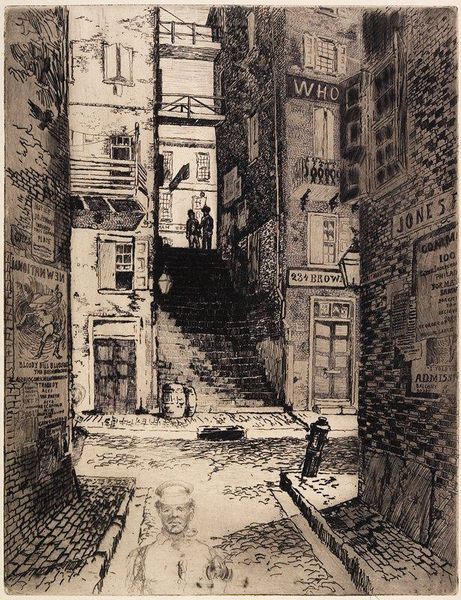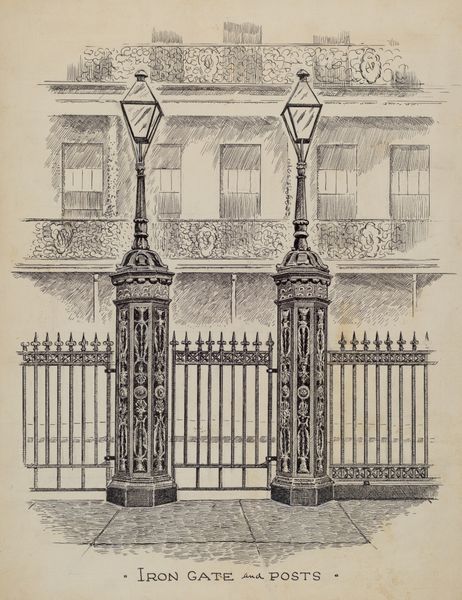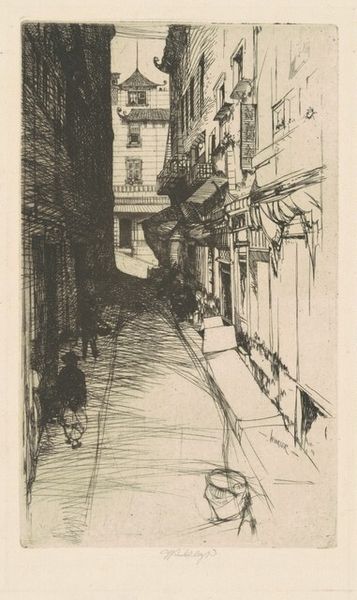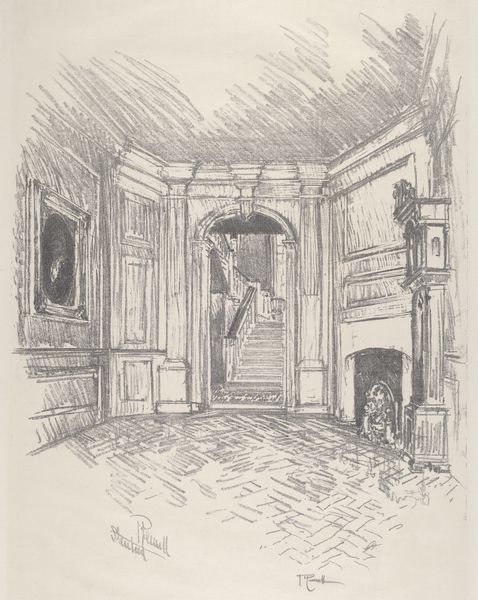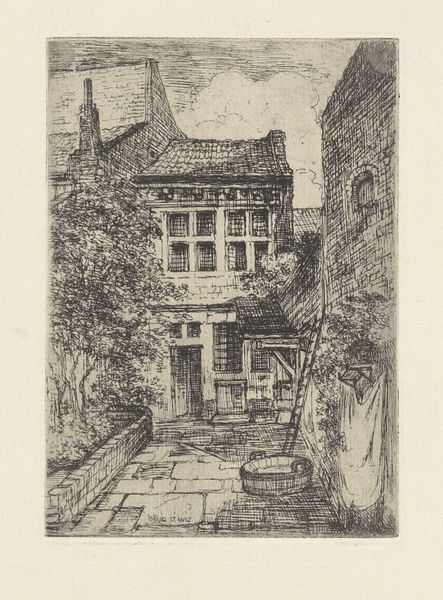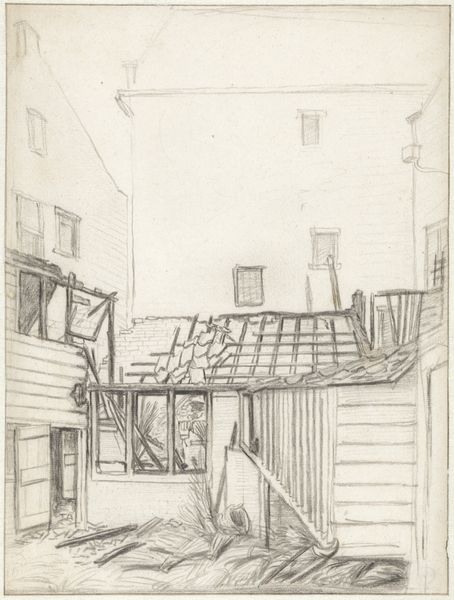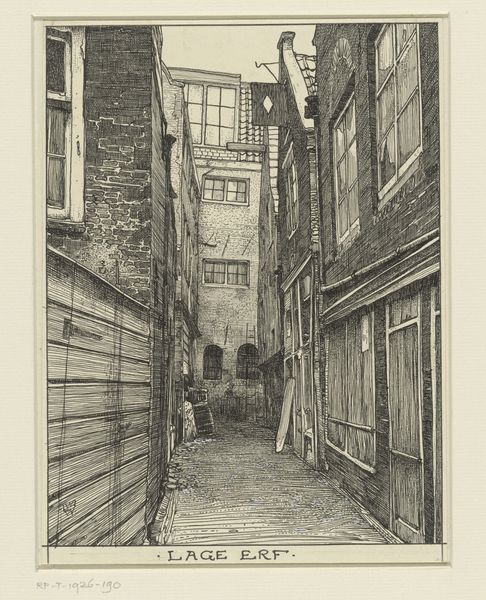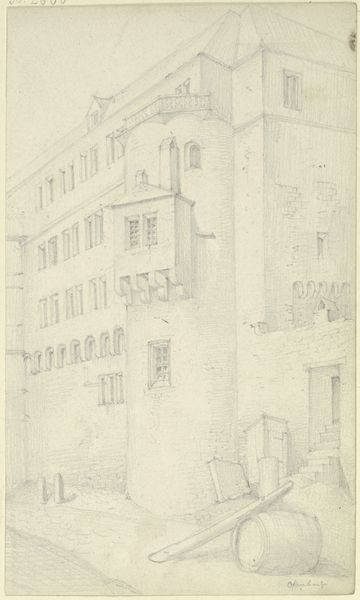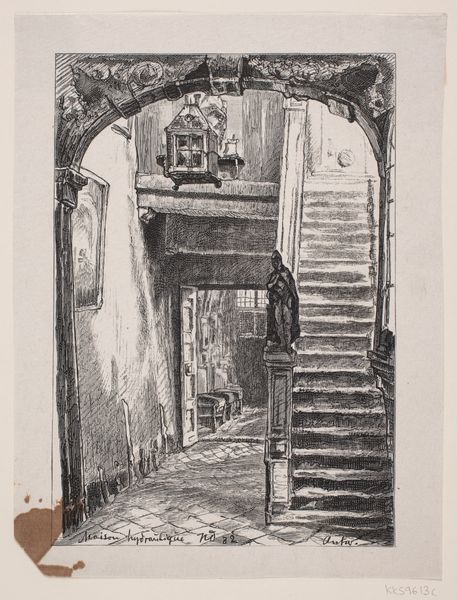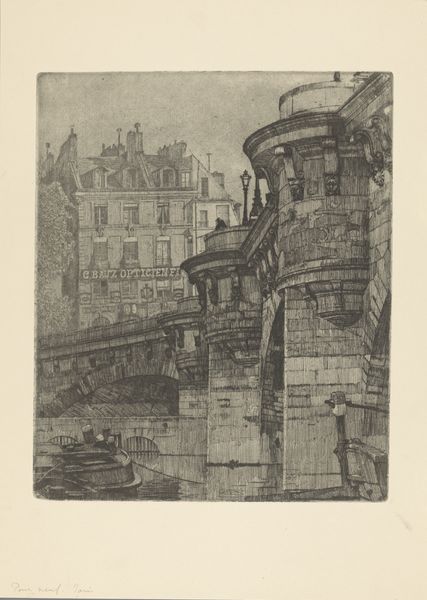
drawing, ink, architecture
#
drawing
#
ink
#
cityscape
#
architecture
Dimensions: overall: 35.7 x 24.4 cm (14 1/16 x 9 5/8 in.)
Copyright: National Gallery of Art: CC0 1.0
Curator: Let’s explore "Iron Balcony," an ink drawing dating from about 1936, created by Thomas Byrne. It showcases a beautiful wrought-iron stairway ascending alongside a building. Editor: It strikes me as melancholic, almost romantic. The intricate ironwork contrasting with the stark shading creates a sense of shadowed elegance, doesn't it? The composition leads the eye upward, hinting at unseen levels, private stories… Curator: Precisely! Iron balconies like these became potent symbols of class and status during that period. Wrought iron signified a level of craftmanship and refinement affordable only to certain strata of society. The balcony in Byrne's piece offers a visual representation of social divisions rendered palpable in urban landscapes. It highlights the architectural signifiers embedded in public spaces. Editor: The cyclical motifs embedded within the iron railings, those repetitive circles and curves… it makes me think about the cycles of life, repeated histories, almost like the architectural rendering of collective memory. Iron, as a material, has such a strong symbolic connection to industry and permanence, too, yet here, softened by organic forms. Curator: An excellent point! It’s worth noting that architectural drawings served multiple functions back then, simultaneously as practical blueprints and powerful marketing tools. In that context, Byrne's careful attention to decorative detail suggests both aspiration and nostalgic longing for an age of grand architectural statements during periods of massive socio-economic shifts. The building itself becomes a social character in Byrne's hands, narrating broader themes of aspiration and change. Editor: And that spindly tree in the background—its reaching branches seem to echo the aspiration you speak of. There’s a palpable tension between the rigidity of the architecture and the unruly growth of nature itself, symbolizing the push and pull of forces defining everyday city life. Overall, this cityscape acts as a repository of images and histories. Curator: I concur wholeheartedly! Hopefully, the viewers better appreciate not only Byrne’s obvious skill, but how civic dreams, class aspirations and individual impressions mingle so eloquently. Editor: Right—visual stories imprinted upon even the most seemingly straightforward street scene.
Comments
No comments
Be the first to comment and join the conversation on the ultimate creative platform.
